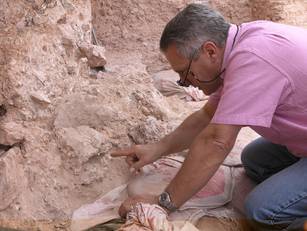Anthropologists recently made a fascinating discovery: Homo sapiens fossils found in Morocco date back 300,000 years. Until about a week ago, we thought our species reaches back only 200,000 years. The extra hundred grand opens up all kinds of possibilities for how and where we evolved — possibilities anthropologists have hardly begun to digest.
Even more interesting, the discovery reveals human beings few of us have ever imagined. These newly-discovered Homo sapiens had faces like ours. Unlike Neanderthals, they’d pass for John and Jane Doe if they walked down the street — assuming they wore hats. They’d need the hats because their skulls and brains were not quite like ours. They were longer and less rounded. In other words, these were full members of our species, sharing our faces, yet with non-trivial differences in their brains. No one knows yet how those differences impacted their minds.
The New York Times has a good article on the discovery, here.
—————–
—————–
Images:
- Photo: Jean-Jacques Hublin at Jebel Irhoud (Morocco), pointing to the crushed human skull (Irhoud 10) whose orbits are visible just beyond his finger tip. By Shannon McPherron, MPI EVA Leipzig; licensed through Wikimedia Commons.
© 2017 by David W. Tollen. All rights reserved.


0 Comments